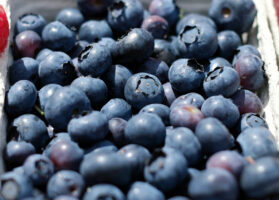Agronometrics in Charts: 2022: Asparagus in Review
In this installment of the ‘Agronometrics In Charts’ series, Valeria Concha reviews 2022 for asparagus in the US market. Each week the series looks at a different horticultural commodity, focusing on a specific origin or topic visualizing the market factors that are driving change.
Over the last 20 years, the volume of asparagus grown in California has reduced drastically, however, Americans consume over 500 million pounds of asparagus each year, the asparagus consumers are a consistent group, though there are geographic, age and wage differentials that point to increased consumption. Thus, the supply of asparagus in the U.S. market is highly dependent on imports, mainly from Mexico and Peru.
This season, Mexico’s production, which peaks between February and April, declined due to adverse weather conditions. The Caborca region of Sonora, one of Mexico’s main asparagus producing states, had a poor winter, with strong winds and frost, contributing to a 70% decrease in production in late February, according to the Caborca Vegetable Producers Association. Between week 5 and 18 of 2022, the volume of Mexican asparagus in the U.S. market was 21% lower compared to the same period of the previous year.

Source: USDA Market News via Agronometrics.
(Agronometrics users can view this chart with live updates here)
In the case of Peru, the constant supply throughout the year is noteworthy. Although the Peruvian asparagus season usually peaks between September and December, the variety of climates allows for year-round cultivation. Low temperatures during the Peruvian winter this year led to slightly lower yields, but Peru’s asparagus suppliers expected supplies to be similar to last season, with production increasing in late September and promotable supplies beginning in October through mid-January, enabling an increase in Peruvian asparagus volumes at the end of the year.

Source: USDA Market News via Agronometrics.
(Agronometrics users can view this chart with live updates here)
An important milestone for Peruvian production was that SENASA and the IPEH requested the United States to waive fumigation as a requirement for Peru to export its asparagus to the US. In July 2022, the USDA’s Animal & Plant Health Inspection Service and Peru’s National Agricultural Health Service (SENASA Peru) met to discuss technical aspects related to the protocol for the export of fresh asparagus to this country without fumigation. As a result, a draft Pest Risk Analysis was released by APHIS and a public comment period followed. While it is true that such leniencies could benefit Peru’s asparagus exports, Peru is still confronted by issues such as labor constraints, hefty production costs, logistical difficulties and aging crops, the effects of which will be self-evident.
Currently, at the same time demand is consistent and was good for Thanksgiving. “Christmas looks like it will be good continuing into the New Year,” says Carlos Solf, director of procurement for Southern Specialties, adding that generally, asparagus consumption continues to grow given the nutritional value of the vegetable.

Source: USDA Market News via Agronometrics.
(Agronometrics users can view this chart with live updates here)
To learn more take a look at our most read cherry stories this year:
1. Agronometrics in Charts: California asparagus continues to thrive despite challenges
2. California asparagus production kicks off
3. Agronometrics in Charts: Caborca’s frigid winter taking a toll on asparagus production
4. Agronometrics in Charts: Peru Bent on Recovering Lost Ground for Asparagus Production
5. Peruvian asparagus importers face transportation issues
Written by: Valeria Concha






